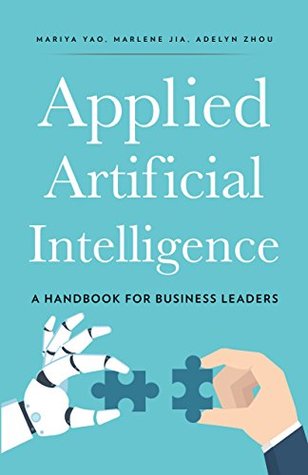More on this book
Community
Kindle Notes & Highlights
by
Mariya Yao
Read between
June 9 - July 14, 2019
The goal of data mining is to extract patterns and knowledge from large-scale datasets so that they can be reshaped into a more understandable structure for later analysis.
Fast.ai’s non-stop efforts to democratize AI education are paying off. Students of its MOOC are using techniques taught in the class to treat Parkinson’s disease, give visually impaired patients more independence, fight online hate speech, and end illegal logging and harmful human activity in endangered rainforests.
Machine learning and AI are not always the right solutions to a problem. Identifying the right problem and its solution requires tight integration and adaptation between your products and your users as well as a collaborative relationship between your team and your users.
Who cares if you can solve a problem with 99 percent accuracy if no one needs that problem solved?
Patrick Hebron, author of Machine Learning For Designers, “[t]hey are meant to give us leverage so that we can push harder. Tools lift rocks. People build cathedrals.”
translating those ideas into viable software requires having the right mindset, dedicated leadership, and a diverse support team.
A key milestone in the corporate digital transformation is the development of a centralized data and technology infrastructure. These two elements connect consumer applications, enterprise systems, and third-party partners and provide access to a single source of truth that contains relevant, up-to-date, and accurate information for all parties.
True leadership has to be demonstrated through vision, action, and budget.
Keeping your board educated and updated is essential if you aspire to larger projects.
Executives alone cannot bring about organizational change, especially of the magnitude that AI can potentially make across an enterprise and industry. Some of your most important stakeholders are your front-line employees and middle managers who will be integrating, using, and overseeing AI tools every day.
You will need to put together a multi-disciplinary, cross-departmental “AI SWAT Team” composed of stakeholders in different departments, different functional roles, and different hierarchical levels.
Pick a smaller, sure-win project to demonstrate possibilities.
Eliminating boring jobs that employees dislike can also improve morale and interest as they take on increasingly more meaningful work.
Perfect is the enemy of the good.
Gap Identification After formulating goals and benchmarking your current performance against others, list all of the features associated with each objective that you want to achieve.
While some knowledge can be encoded, others will require you to augment your quantitative analysis with qualitative interviews and external research.
you lack the requisite data, then you’re missing information about your business that is critical to your high-level strategy.
If you have data but not the domain expertise to interpret that data, you are at risk of feeding the wrong assumptions into your intelligent systems, which will invariably produce the wrong results.
Just because a problem can be automated does not mean that an AI solution is appropriate. For example, using AI to generate an annual shareholder report may not be a good investment if you can easily hire analysts to do the work more cheaply than you can build or buy a software alternative. The task also requires strategic communication and contextual understanding, which modern AI technologies struggle with.
Models are typically retrained every few weeks or months, or when there is a substantial change in external conditions that fundamentally changes the model trajectory. Some use cases may require daily or even real-time retraining. As a rule of thumb, half of your time should be spent on measurements and maintenance rather than on model creation.
constantly evolving. Visit our website at appliedaibook.com
Not only have they hired the world’s most brilliant AI talent to staff research groups like Google Brain, DeepMind, and Facebook AI Research (FAIR), they’ve also developed powerful internal machine learning platforms like Facebook’s FBLearner, Uber’s Michelangelo, Google’s TFX, and Twitter’s Cortex to enable their engineers and other employees to rapidly develop models and capabilities into product teams, business units, and end-user experiences.
AI solutions are also not cheap. The huge initial outlay of cash can take years to achieve its anticipated ROI, if at all, especially if your company experiences decreased productivity during implementation.
General and administrative units such as Finance, Legal, and Business Operations are often underappreciated because they do not generate revenue. However, these functions perform some of the most critical jobs within the company, such as keeping track of the money that Sales bring in, using that money to pay for the ads that Marketing will use to attract new leads, and keeping a wary eye out for regulatory and legal hurdles that Product Management may have to address.


